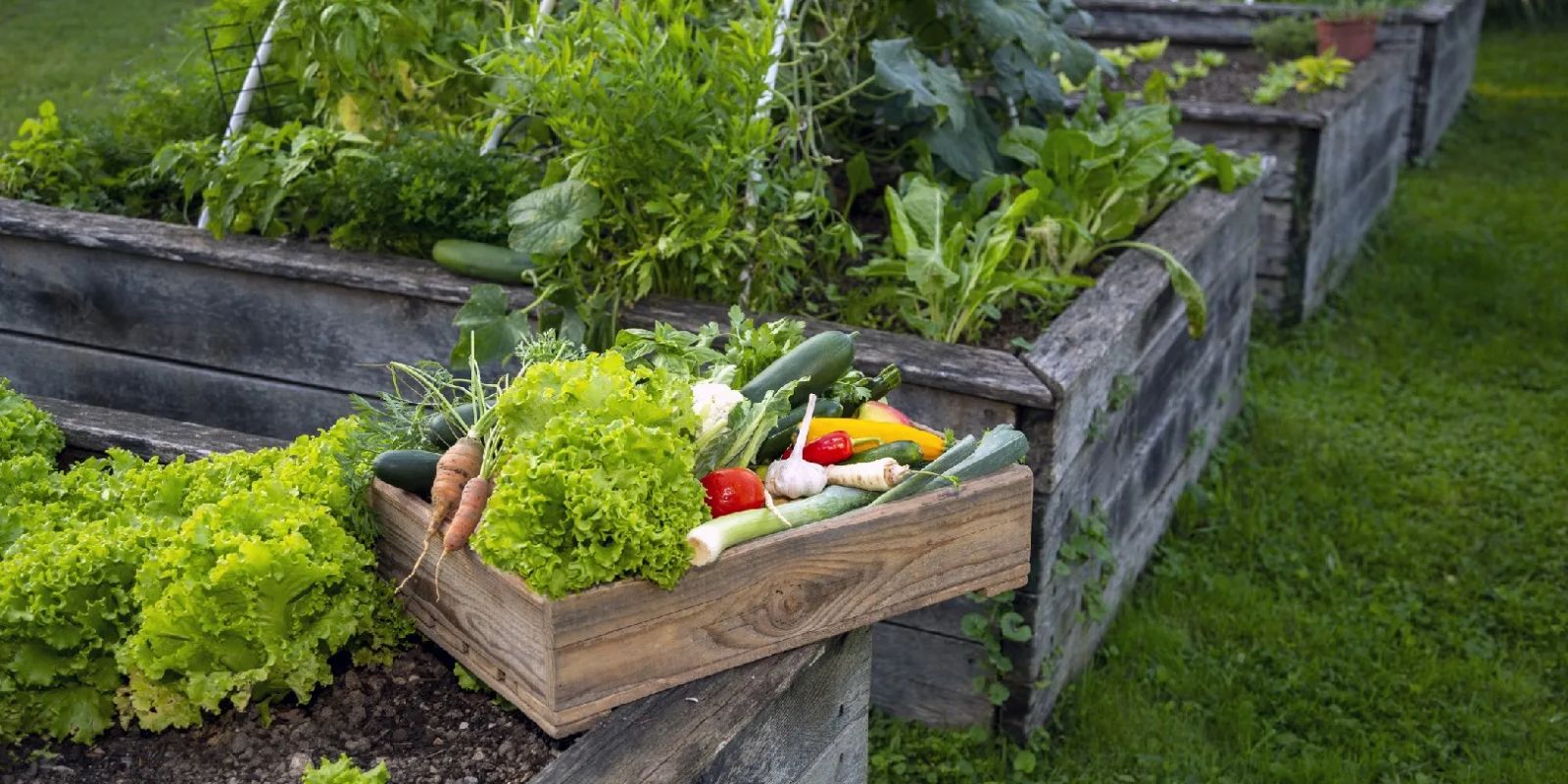Introduction
Imagine stepping outside your door and picking fresh, juicy tomatoes in the middle of winter, or harvesting crisp greens even in the depths of summer. Creating a home garden that provides fresh produce year-round is a dream for many gardeners, and with the right strategies, it’s entirely achievable. This comprehensive guide will walk you through the essential steps to establish a thriving year-round garden, ensuring you enjoy bountiful harvests of fresh produce regardless of the season.
1. Planning Your Year-Round Garden
Designing the Garden Layout
A well-thought-out garden layout is crucial for year-round success. Consider the following elements when planning:
- Garden Zones: Designate different areas for various types of crops, such as cool-season versus warm-season plants. This allows you to efficiently manage space and optimize growing conditions.
- Vertical Space: Utilize vertical gardening techniques like trellises, arbors, and hanging baskets to maximize your growing area. This is particularly useful for climbing plants like cucumbers and beans.
- Container Gardening: Incorporate containers for flexibility and mobility. Containers are perfect for growing herbs, lettuce, and small vegetables, and they can be moved indoors or to protected areas during adverse weather.
2. Selecting Seasonal Crops
Cool-Season Crops
Cool-season crops thrive in lower temperatures and can be grown during fall, winter, and early spring. Some excellent choices include:
- Leafy Greens: Spinach, kale, and Swiss chard are hardy and can survive frost.
- Root Vegetables: Carrots, beets, and radishes can be sown in late summer for a winter harvest.
- Brassicas: Broccoli, cauliflower, and Brussels sprouts enjoy the cooler weather and can be grown in the fall.
Warm-Season Crops
Warm-season crops need warmer temperatures and are ideal for spring and summer. Consider these options:
- Tomatoes: Grow them in containers or raised beds where they get plenty of sun.
- Peppers: Both sweet and hot peppers thrive in warm weather.
- Cucumbers: These are great for vertical gardening and need ample sunlight.
3. Investing in Tools and Equipment
Essential Gardening Tools
To successfully manage a year-round garden, you’ll need a variety of tools:
- Garden Tiller: Useful for preparing soil in larger garden beds.
- Pruning Shears: Essential for trimming plants and harvesting produce.
- Watering Can: Handy for small gardens or container plants.
- Soil Test Kit: Helps you monitor soil pH and nutrient levels.
Advanced Equipment
- Grow Lights: For indoor gardening, grow lights can simulate natural sunlight, enabling you to grow plants indoors during winter.
- Greenhouses: These structures provide a controlled environment, allowing you to extend your growing season and protect plants from harsh weather.
- Cold Frames: Simple, low-cost structures that can be placed over garden beds to protect crops from frost and extend the growing season.
4. Implementing Succession Planting
What is Succession Planting?
Succession planting involves staggering your plantings to ensure a continuous harvest. This technique maximizes your garden’s productivity and extends the harvest period.
How to Practice Succession Planting
- Plan Your Planting Schedule: Determine the ideal planting times for each crop based on your region’s climate and the crop’s growing requirements.
- Stagger Plantings: Sow seeds or plant seedlings at regular intervals. For example, plant a new batch of lettuce seeds every 2-3 weeks to ensure a steady supply.
- Rotate Crops: Rotate crops to prevent soil depletion and reduce the risk of pests and diseases. This practice also helps maintain soil health.
5. Managing Soil Health
Importance of Soil Management
Healthy soil is the foundation of a productive garden. Proper soil management ensures that your plants receive the nutrients they need and reduces the risk of disease.
Soil Preparation
- Soil Testing: Test your soil to determine its pH and nutrient levels. Amend soil as needed to create the optimal environment for plant growth.
- Composting: Add compost to improve soil structure, increase fertility, and promote beneficial microorganisms.
- Mulching: Apply mulch to retain soil moisture, regulate temperature, and suppress weeds. Organic mulches like straw or shredded leaves are excellent choices.
Organic Fertilizers
- Compost: A natural, slow-release fertilizer that enriches soil and provides essential nutrients.
- Bone Meal: Adds phosphorus, which is vital for root development and flower production.
- Fish Emulsion: A liquid fertilizer that provides a balanced mix of nutrients and promotes vigorous plant growth.
6. Seasonal Considerations and Adjustments
Winter Gardening Tips
- Protecting Plants: Use row covers, cloches, or cold frames to shield plants from frost and extend the growing season.
- Indoor Gardening: Grow herbs and small vegetables indoors using grow lights and containers.
Summer Gardening Tips
- Watering: Increase watering frequency during hot weather and use mulch to retain soil moisture.
- Pest Control: Monitor for pests and diseases, and use organic pest control methods if needed.
7. Harvesting and Preserving
Harvesting Techniques
- Timing: Harvest crops when they reach maturity. For example, pick radishes when they are firm and about 1 inch in diameter.
- Handling: Handle produce gently to avoid bruising and damage.
Preserving Your Harvest
- Canning: Preserve excess produce by canning, which allows you to enjoy your harvest throughout the year.
- Freezing: Blanch and freeze vegetables to maintain their flavor and nutritional value.
- Drying: Use a dehydrator or oven to dry herbs and fruits for long-term storage.
Conclusion
Creating a home garden that produces fresh, delicious produce year-round is achievable with careful planning and attention to detail. By designing an efficient garden layout, selecting appropriate crops, investing in the right tools, and practicing effective soil and pest management, you can enjoy bountiful harvests throughout the year. With these strategies, you’ll transform your garden into a reliable source of fresh produce and experience the satisfaction of homegrown food in every season.
Call to Action
Start your journey to a year-round fresh produce garden today and share your gardening success with us! 🌱🍅🥕 #YearRoundGardening #HomeGarden #FreshProduce #GardeningTips #GreenThumb #SustainableLiving #GrowYourOwnFood

